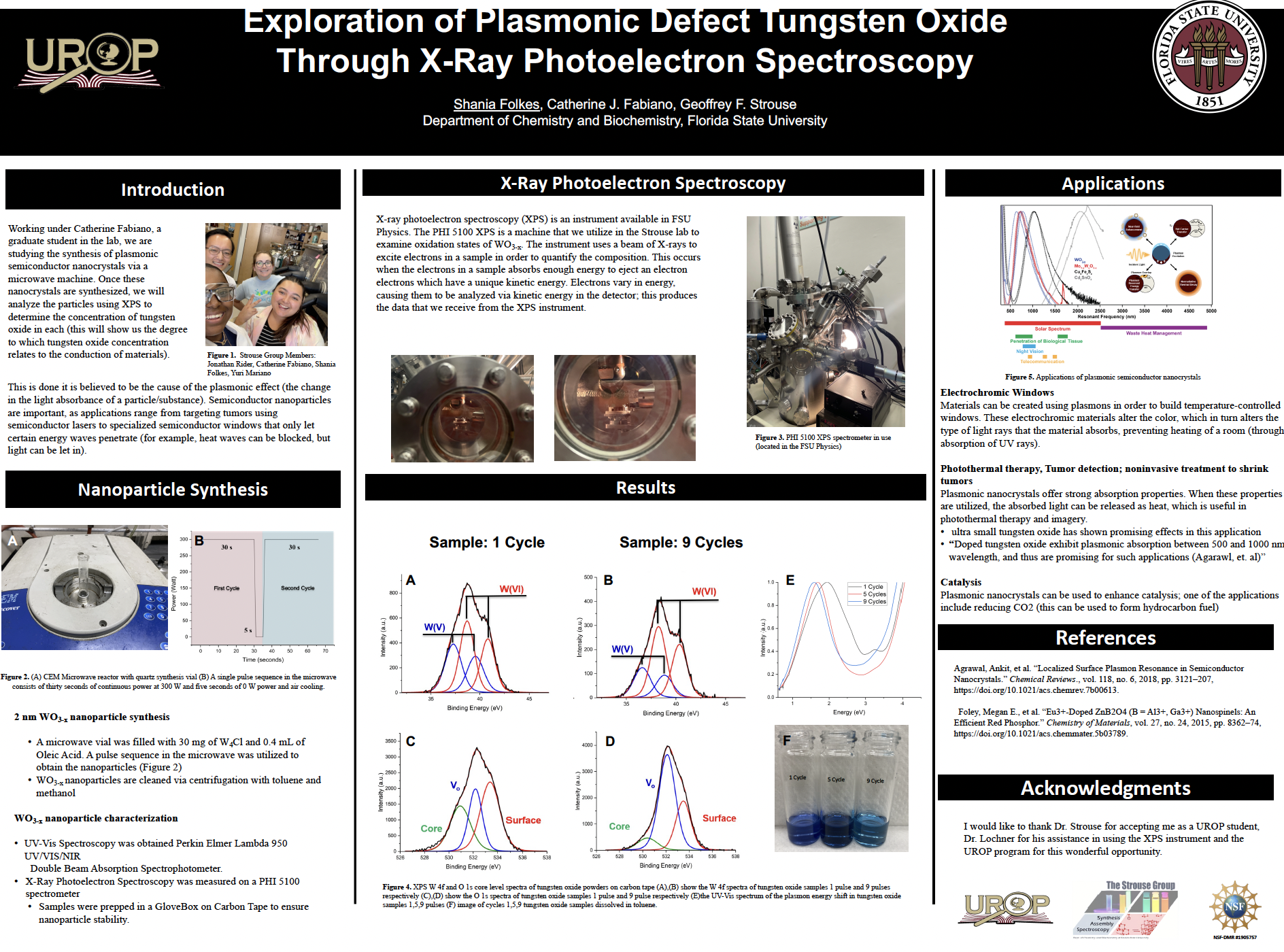Research Symposium
23rd annual Undergraduate Research Symposium, April 6, 2023
Shania Folkes Poster Session 2: 1:30 pm - 2:30 pm/ Poster #358

BIO
My name is Shania Folkes, I’m a first-year undergraduate researcher through FSU’s UROP program. I am majoring in neuroscience on a pre-med track to specialize in neurosurgery! Some fun facts about me: I am the middle child of 9 children, and I am a licensed practical nurse in all 50 states. I’m incredibly passionate about research, and grateful to the UROP program and Catherine Fabiano for facilitating this opportunity for me. This lab focuses on the synthesis and application of semiconductor nanocrystals, which can be used in photo thermal therapy and semiconducting windows. My favorite part about this lab has been synthesizing nanocrystals and the comradery within the lab. In the future, I hope to continue in this lab. I will go on to research neurodegenerative conditions in my career. These conditions, such as Alzheimer’s disease, Guillain-Barré Syndrome, and Amyotrophic Lateral Sclerosis are incredibly debilitating and progressive with very few treatment options available. Overall, I just hope to be an active contributor to society and use the privilege that I have as a student to learn more about these conditions and work with other professionals and people with such conditions to experiencing a better quality of life.
Exploration of Plasmonic Defect Tungsten Oxide Through X-Ray Photoelectron Spectroscopy
Authors: Shania Folkes, Catherine Fabiano; Dr. Geoffery StrouseStudent Major: Cellular and Molecular Neuroscience
Mentor: Catherine Fabiano; Dr. Geoffery Strouse
Mentor's Department: Chemistry Mentor's College: Florida State University Co-Presenters:
Abstract
Working under Catherine Fabiano, a graduate student in the lab, we are studying the synthesis of plasmonic semiconductor nanocrystals via a microwave machine. Once these nanocrystals are synthesized, we will analyze the particles using XPS to determine the concentration of tungsten oxide in each (this will show us the degree to which tungsten oxide concentration relates to the conduction of materials). This is done it is believed to be the cause of the plasmonic effect (the change in the light absorbance of a particle/substance). Semiconductor nanoparticles are important, as applications range from targeting tumors using semiconductor lasers to specialized semiconductor windows that only let certain energy waves penetrate (for example, heat waves can be blocked, but light can be let in).
Keywords: chemistry, nanocrystals, engineering


